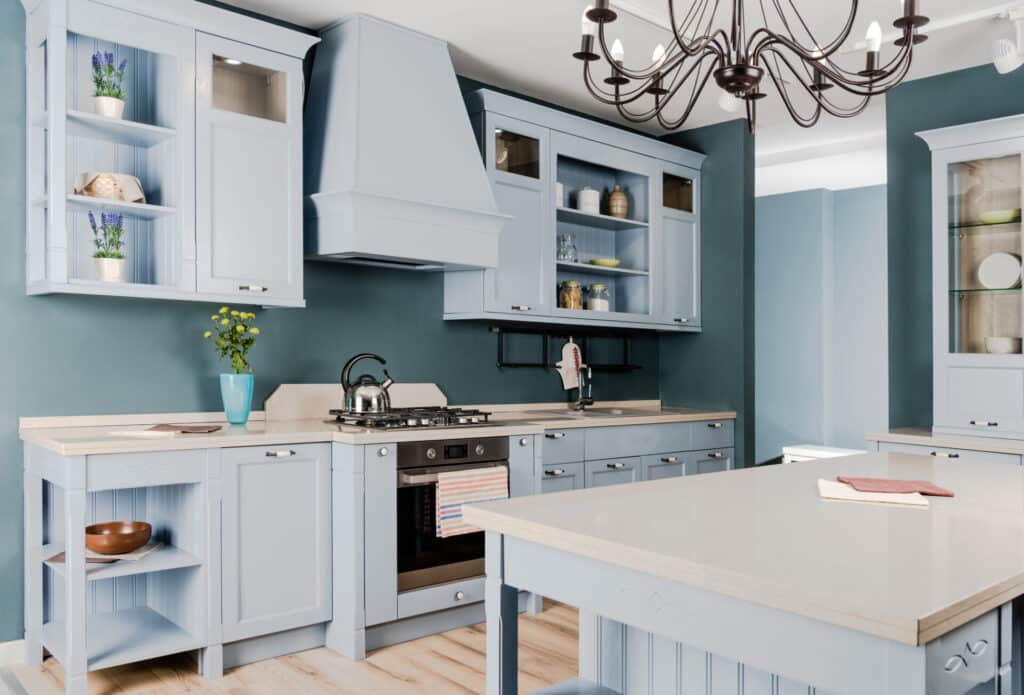
When it comes to designing a kitchen, one of the most important decisions to make is the color scheme. Choosing the right colors for your cabinets and countertops is crucial in creating a cohesive and visually appealing space. One question that often arises during this process is whether the countertops should be lighter or darker than the cabinets. While there is no right or wrong answer, here are several factors that must be considered to make an informed decision.
Before delving into this debate, it is important to remember that every kitchen is unique, and the final decision should ultimately depend on your personal preferences and the overall aesthetic you wish to achieve. However, there are some design principles and considerations that can help guide your decision-making process.
1. Contrast and Balance
One of the main factors to consider when deciding on the color scheme for your kitchen is contrast. Contrast refers to the difference between two colors, and it plays a major role in creating balance and visual interest in a space. When it comes to countertops and cabinets, opting for contrasting colors can be a great way to create a dynamic and eye-catching kitchen.
If your cabinets are light, such as white or cream, choosing a darker countertop can provide a striking contrast that adds depth and dimension to the space. On the other hand, if your cabinets are already dark, a lighter countertop can create a sense of balance by providing a visual break and preventing the space from feeling too heavy or overwhelming.
2. Size and Scale
Considering the size and scale of your kitchen is another important factor to keep in mind when deciding on the color scheme. Lighter colors generally tend to make a space appear bigger and more open, while darker colors can create a more intimate and cozy ambiance. Therefore, if you have a smaller kitchen, opting for lighter countertops can help create the illusion of a more expansive space.
However, it is important to note that this is not a strict rule, and there are exceptions to this general guideline. For example, suppose you have ample natural light flooding into your kitchen. In that case, you can afford to experiment with darker countertops without making the space feel cramped. The overall design style and desired mood can also influence your choice. For instance, in a rustic or industrial-style kitchen, darker countertops can add warmth and character, even in a smaller space.
3. Style and Aesthetic
Another important consideration is the style and aesthetic you wish to achieve in your kitchen. Different color combinations can evoke different moods and styles. For example, if you’re aiming for a sleek and modern look, pairing light cabinets with light countertops can create a clean and minimalist aesthetic. On the other hand, if you prefer a more traditional or rustic style, darker countertops can add richness and a sense of timelessness to your space.
It’s also essential to consider the overall color palette and materials used in the kitchen. Suppose you have other elements, such as flooring, backsplash tiles, or appliances, that already dominate the color scheme. In that case, you may want to opt for a countertop color that complements and enhances those existing elements. Remember that the countertops should not compete with other focal points in the kitchen but instead should unify the space by tying various elements together.
4. Maintenance and Practicality
Considering the practicality and maintenance of different countertop colors is another crucial aspect to keep in mind. Lighter countertops can be more forgiving regarding stains and scratches, as they hide imperfections better than darker surfaces. This can be particularly advantageous if you have a busy household or are prone to accidental spills in the kitchen.
However, it is important to note that the actual material of the countertop can also affect its maintenance requirements. For example, certain light-colored natural stones, like marble, can be more prone to staining and require more maintenance than some darker stones or engineered materials. Therefore, it is essential to research and choose a countertop material that suits your lifestyle and maintenance preferences, regardless of the color.
5. Personal Preference
Last but certainly not least, personal preference should be the driving force behind your decision. After considering all the factors mentioned above, ultimately, it is important that you choose a color scheme that resonates with your own taste and style. Your kitchen is a space where you spend a significant amount of time, so it should be a reflection of your personality and preferences.
Consider your favorite colors, the overall ambiance you wish to create, and how the colors will make you feel in the space. If you are drawn to lighter colors for their airy and fresh feel, choosing lighter countertops can be the perfect fit. Similarly, suppose you are more inclined towards darker tones for their warmth and richness. In that case, darker countertops might be the ideal choice.
In conclusion, whether your countertops should be lighter or darker than your cabinets depends on a combination of design principles and personal preferences. Considering factors such as contrast, size and scale, style and aesthetic, maintenance, and personal taste can help you make an informed decision. Remember, there are no strict rules in design, and breaking conventions can often lead to unique and striking results. Ultimately, choose the color scheme that speaks to you and creates a kitchen you will love for years to come.
